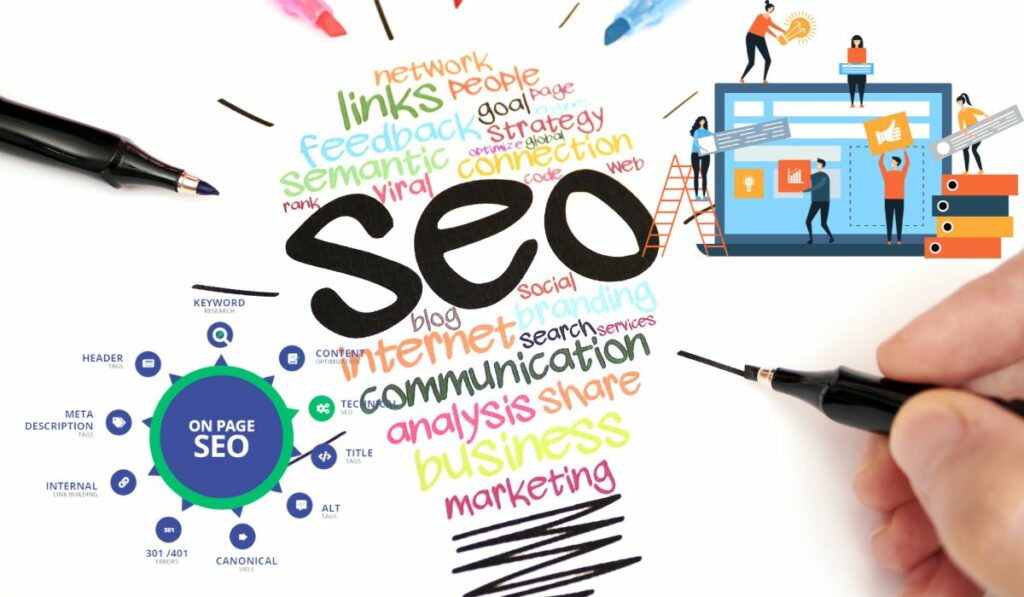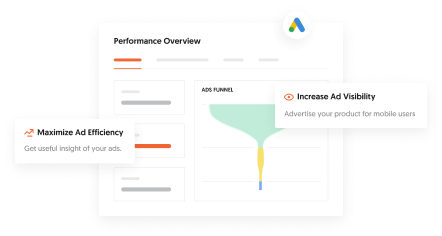Optimization is the key when you try to achieve a good rank on Google because of all these highly competitive markets. The optimized web page can increase your status at a higher pace. The Ultimate Guide to On-Page Optimization for SEO Success. You must take a step further in this detailed blog.
But why is an optimized website even essential? As the world of digital marketing evolves, there is a growing emphasis on optimizing your website for search engines. Off-page factors such as backlinks and social media presence are undoubtedly important. Equally critical is to ensure that your on-page elements are fully optimized to give your website the best possible chance of ranking highly in search engine results pages (SERPs). This article will discuss how you can optimize your website’s on-page elements for better search visibility.
This post will discuss the optimization process and what can give you better search visibility. Just keep reading. And you find out better strategies to optimize your site.
What are On-Page Optimization Elements?
On-page elements are the components of your website that are directly visible to users, such as titles, content, images, and URLs. These elements can significantly impact your website’s ranking in search engine results pages. Optimizing your website’s on-page elements involves changing these components to improve your website’s visibility and relevance to search engines.
The Importance of On-Page Optimization
On-page optimization is crucial because it helps search engines understand the content of your website and its relevance to user search queries. Optimizing your on-page elements can improve your website’s visibility and increase organic traffic. Additionally, on-page optimization can improve the user experience on your website, leading to better engagement, higher conversion rates, and lower bounce rates.
How to Optimize Your Website’s On-Page Optimization for SEO Elements
When optimizing your website for search visibility, there are many factors to consider. While off-page optimization is essential, on-page optimization is equally important, if not more so. By ensuring that your website’s on-page elements are correctly optimized, you can help your website rank higher in search engine results pages (SERPs) and attract more traffic.
Here are some tips to help you optimize your website’s on-page elements for better search visibility:
-
Conduct Keyword Research and Analysis: Before optimizing your website’s on-page elements, it’s important to conduct keyword research and analysis. By identifying the keywords and phrases your target audience uses to search for your products or services, you can better optimize your website’s content and on-page elements to match their search intent. You can use tools like Google Keyword Planner, Ahrefs, SEMrush, or Moz Keyword Explorer to conduct keyword research and analysis. These tools can help you identify relevant keywords, analyze keyword difficulty, and uncover opportunities you might have missed.
-
Optimize Your Title Tags and Meta Descriptions: Title tags and meta descriptions are some of the most important on-page elements you need to optimize. These elements not only help search engines understand what your web pages are about, but they also help users decide whether to click on your website or not.
Include your target keywords and phrases when optimizing your title tags and meta descriptions. But be careful not to overdo it, as keyword stuffing can lead to a penalty from search engines. Instead, focus on creating compelling and informative titles and descriptions that accurately describe the content of your web pages.
-
Use Header Tags to Structure Your Content: Header tags (H1, H2, H3, etc.) are HTML tags used to structure your web page content. These tags not only help search engines understand the hierarchy of your content but they also make it easier for users to scan and navigate your website.
When using header tags, use your target keywords in the H1 tag, which will be the page’s main heading. Use H2 tags for subheadings and H3 titles for sub-subheadings, if necessary. But again, keep it simple, and make sure that your header tags accurately reflect the content of your web pages.
-
Optimize Your Images and Alt Text: Images can not only make your website more visually appealing, but they can also help improve your website’s search visibility. Optimizing your images and alt text can help search engines understand what your ideas are about and improve the accessibility of your website.
When optimizing your images, use descriptive and keyword-rich file names; for example, instead of “IMG1234.jpg,” use “best-red-widgets.jpg” if the image is related to red widgets. Also, make sure to use descriptive and keyword-rich alt text, which is the text that appears when an image fails to load or for visually impaired users who use screen readers.
-
Improve Your Website’s Page Speed: Page speed is an essential ranking factor affecting your website’s search visibility. Slow-loading web pages can not only hurt your website’s search rankings and frustrate your users and lead to high bounce rates.
To improve your website’s page speed, you can compress your images, minify your HTML, CSS, and JavaScript files, and use a content delivery network (CDN). You can also use tools like Google PageSpeed Insights, GTmetrix, or Pingdom to analyze your website’s page speed and identify areas for improvement.
Essential On-Page SEO Factors for High Search Rankings
As a website owner, your ultimate goal is to rank high on search engines like Google. Achieving a high search ranking involves several factors, one of which is on-page SEO. On-page SEO is all about optimizing your website’s pages to make them more search engine-friendly and improve user experience. This article will discuss the essential on-page SEO factors that can help you outrank other websites in search engine results pages (SERPs).
-
Title Tags Optimization: Title tags are essential on-page elements because they appear in the search engine results pages as clickable headlines. Therefore, you must include your target keywords in your title tags. Ensure that your title tags are descriptive, compelling, and unique to attract users’ attention and encourage them to click through to your website.
-
Meta Descriptions: Meta descriptions appear below the title tag in search engine results pages and summarise your website’s content. Optimizing your meta descriptions can help improve your website’s click-through rate by encouraging users to click through to your website. Ensure your meta descriptions accurately reflect your website’s content and include relevant keywords.
-
Using Of Tags: Header tags, such as H1, H2, and H3, help structure your website’s content and make it easier for users and search engines to understand. Use header tags to break up your content into sections, and make sure to include your target keywords in your header tags.
-
Content Optimization: Content optimization involves making changes to your website’s content to improve its relevance to user search queries. Ensure your content is informative, engaging, and contains your target keywords. Avoid keyword stuffing, which can harm your website’s ranking in search engine results pages.
-
Image Optimization: Optimizing your images involves changing their filenames, alt text, and file size to improve their relevance to user search queries. Ensure that your images are high quality, relevant to your website’s content, and include descriptive alt text.
-
Internal Linking: Internal linking involves linking to other pages on your website to help users and search engines understand the structure of your website. Internal linking can also help distribute link equity throughout your website, improving your website’s ranking in search engine results in pages. Ensure that your internal links are relevant, descriptive, and natural.
-
Mobile Optimization: With more users accessing websites on mobile devices, mobile optimization is crucial for better search visibility. Ensure your website is mobile-friendly, loads quickly, and has a responsive design. Mobile optimization can also improve the user experience on your website, leading to better engagement and conversion rates.
Frequently Asked Questions
Q: How long does it take to see results from on-page optimization?
A: It can take several weeks or months to see results from on-page optimization. However, the time it takes to see results can depend on various factors, such as the competitiveness of your keywords and the level of optimization on your website.
Q: How can a website optimize for better search visibility?
A: To optimize your website for better search visibility, you should maintain some processes like keyword research, lucrative title, and proper use of meta and header tags.
Q: What elements of a webpage can be optimized for search?
A: There are always some basic elements that can be optimized for better results, like URL Structure, Keywords, Images, Page Titles & Meta Descriptions. Proper use of header tags and keywords will dramatically increase your site volume.
Q: Can I over-optimize my website’s on-page elements?
A: Yes, over-optimization, also known as keyword stuffing, can harm your website’s ranking in search engine results pages. Therefore, it’s essential to ensure that your on-page elements are optimized naturally and provide value to users.
Q: Are on-page elements the only factor that affects search engine ranking?
A: No, search engine ranking is affected by various factors, including on-page elements, off-page elements, and technical SEO. However, optimizing your on-page elements can significantly improve your website’s ranking in search engine results pages.
Conclusion
Website optimization can bring you some authentic beast results. You must follow proper guidelines like keyword research and monitoring content to do this. In the digital world, more than having a website is needed to ensure success. You need to optimize your website’s on-page elements for better search visibility. Doing this can drive more traffic to your site, improve your search engine rankings, and ultimately increase your revenue. In this blog post, we have covered some essential on-page optimization techniques that you can use to make your website more visible to search engines. These techniques include optimizing title tags, meta descriptions, headings, and content.




